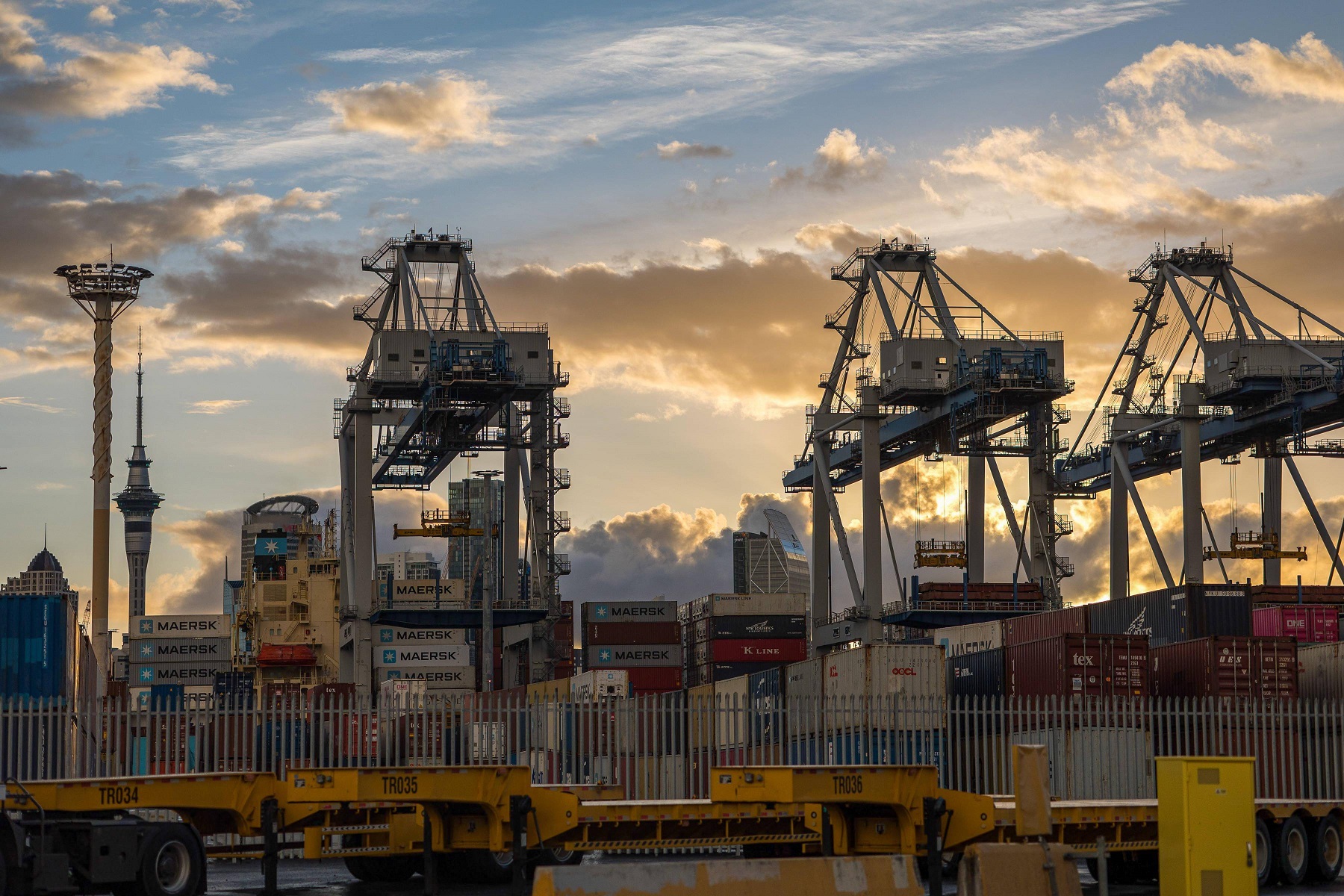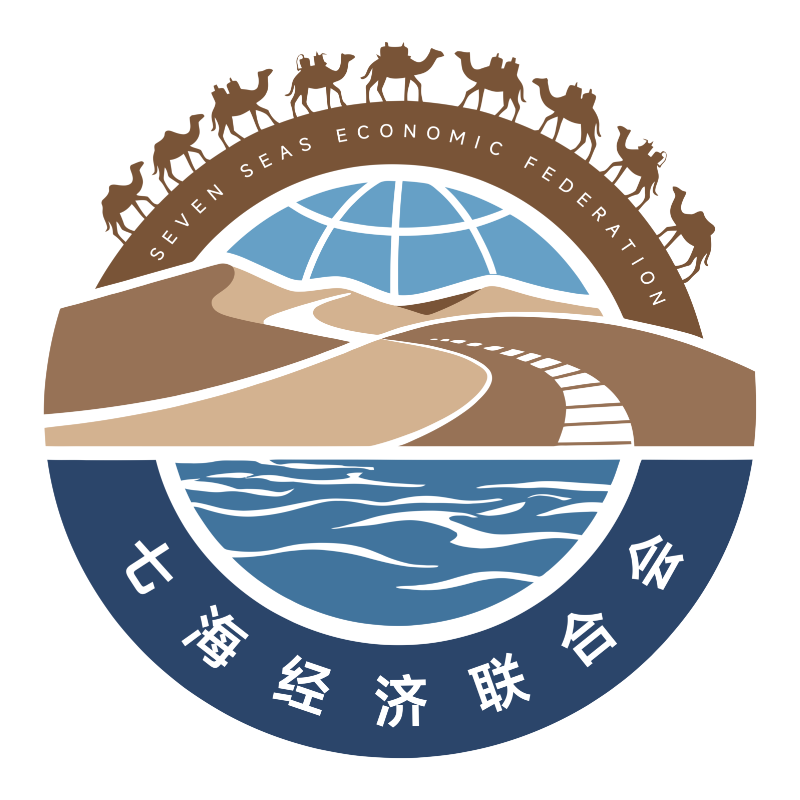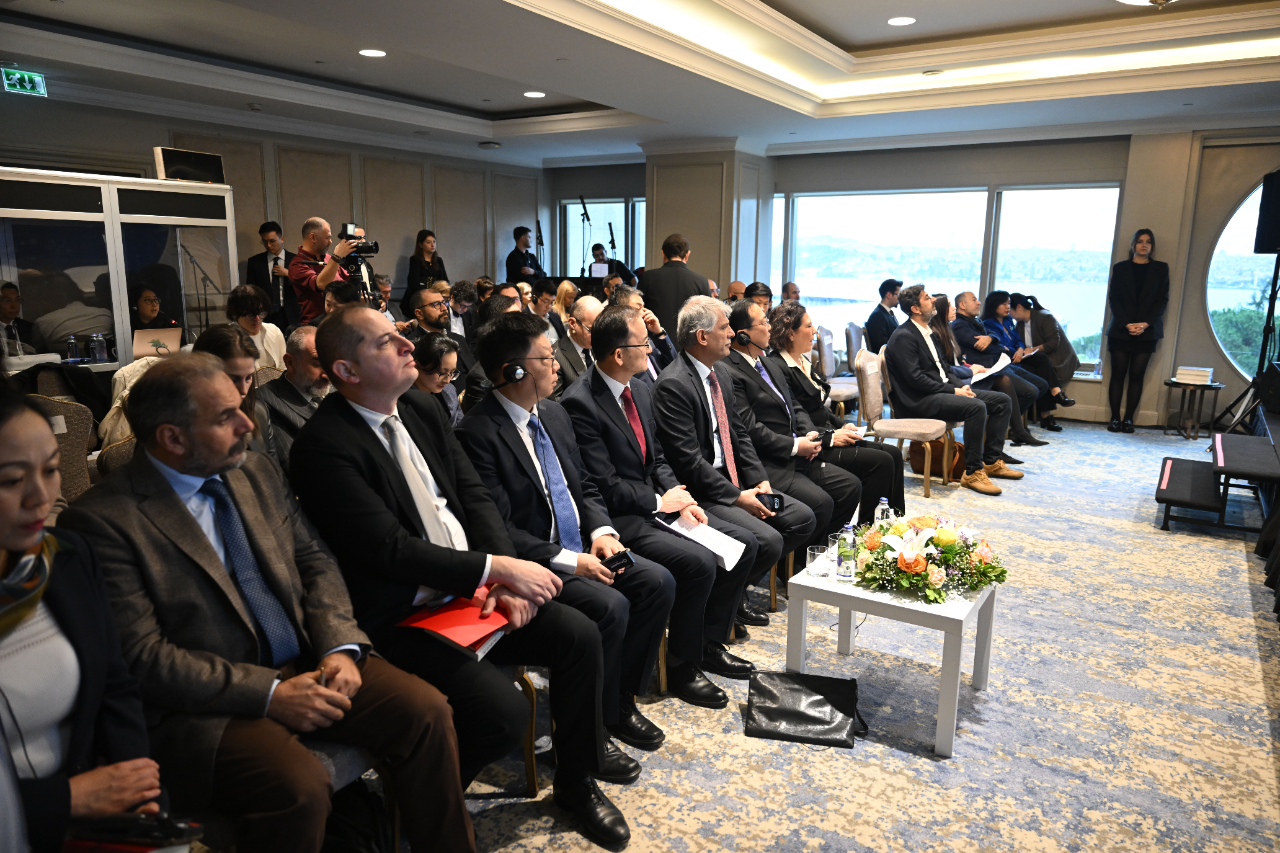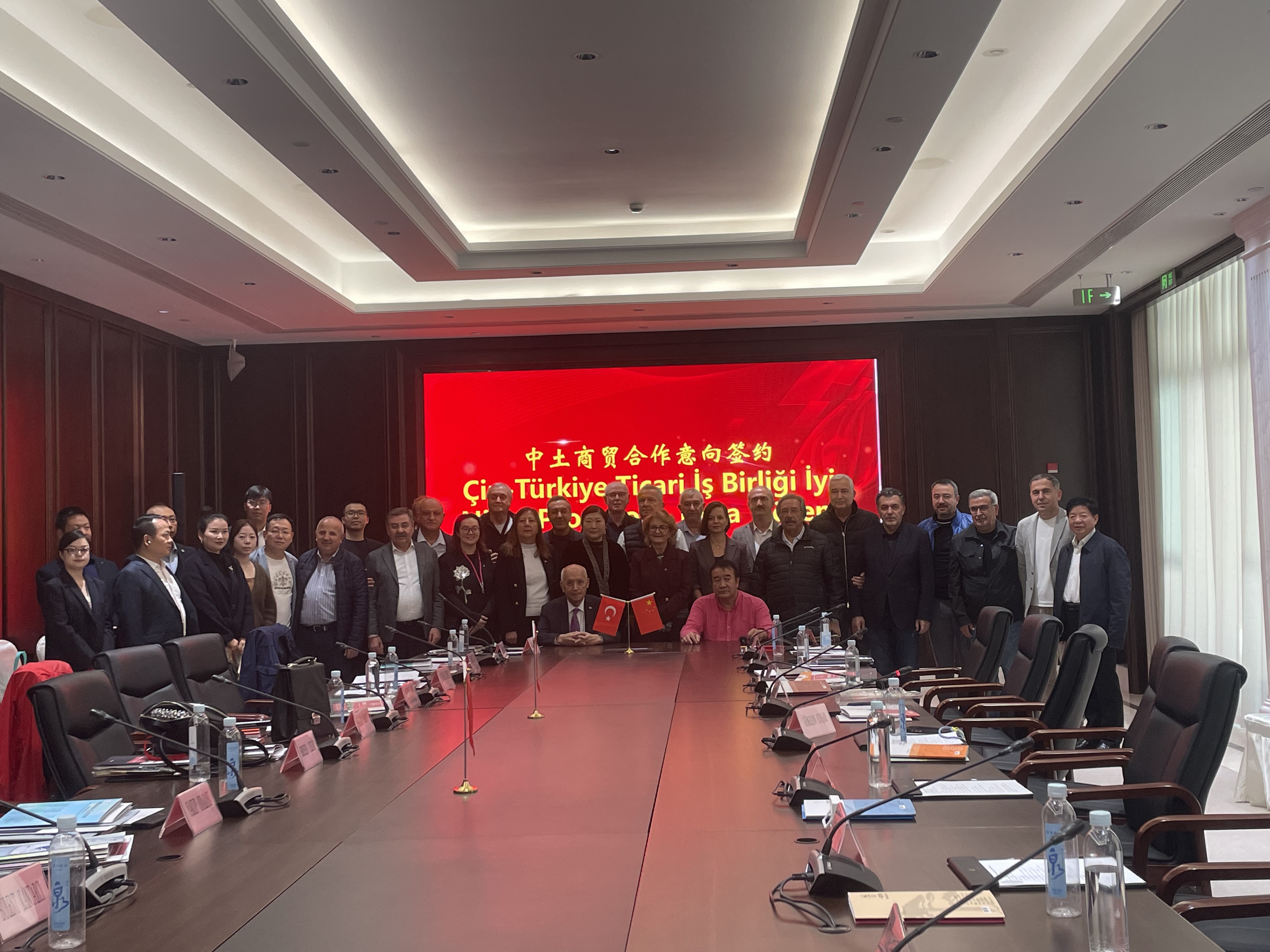Financing channels and methods
With the deepening of the construction of the "the Belt and Road", Chinese enterprises have accelerated their overseas investment, increased their financing needs, and increasingly enriched and diversified the channels and ways of financing at home and abroad.

1. Domestic financing
Enterprises generally adopt three types of financing methods in China: credit financing, bond financing, and equity financing. The following mainly introduces some specific financing methods closely related to enterprises' outward investment.
credit financing
Domestic policy banks and commercial banks provide various forms of loan financing products for "going global" enterprises. Policy bank loans. China Development Bank (hereinafter referred to as "CDB") is the world's largest development financial institution, as well as China's largest medium - and long-term credit bank and bond bank. In recent years, China Development Bank has actively deepened cooperation with governments, enterprises, and financial institutions of various countries, launching multiple international business products. The main products used to support Chinese enterprises' financing are loan financing products and self operated investment products.
(1) Loan financing products: aimed at solving the funding difficulties of Chinese enterprises in key areas such as infrastructure, equipment manufacturing, finance, agriculture, people's livelihood, and energy, mainly including foreign exchange medium and long-term project loans, international syndicated loans, etc. -Medium - and long-term foreign exchange loans: loans with a term of one year or more (excluding), mainly used for basic construction and technological transformation projects in infrastructure, basic industries, and strategic emerging industries, with the expected cash flow generated from the loan as the main source of repayment.
-International syndicated loan: A loan issued by two or more financial institutions to borrowers, with the loan funds used to support the syndicated business of international projects. The advantage of international syndicated loans lies in utilizing international financial market resources, with large loan amounts and multiple loan subjects; Helps enterprises optimize their asset structure and reduce loan concentration. This product is suitable for large-scale project financing, trade financing, and various large-scale working capital financing for domestic and foreign group customers who support overseas projects.
(2) Self operated investment products: As the only professional investment institution in China's banking industry with RMB investment function, China Development Bank relies on its own resource advantages and rich experience in fund preparation and establishment to actively carry out policy fund business and promote Chinese enterprises to "go global". Among them, the typical proprietary investment products are bilateral and multilateral cooperation funds, such as the the Silk Road Fund.
-Overseas investment loans: Export Import Bank provides domestic and foreign currency loans for various overseas investment projects of domestic and foreign Chinese enterprises. This business is applicable to domestic Chinese funded enterprises registered with the Chinese Administration for Industry and Commerce and possessing independent legal personality, or overseas Chinese funded enterprises legally registered and possessing independent legal personality outside of China.
-The "Two Excellencies" loan, also known as China's foreign aid preferential loan and preferential export buyer's credit, is a preferential funding arrangement provided by the Chinese government to the governments of developing countries. The Export Import Bank is the only bank designated by the Chinese government to handle the "two excellences" loan business. The borrowers of the "two excellences" loans are generally sovereign institutions of the borrowing country's government. In some cases, financial institutions or other institutions designated by the borrowing country's government and recognized by the Export Import Bank of China may be used, but guarantees should be provided by their sovereign government agencies.
-Foreign contracted engineering loans: Local and foreign currency loans provided by the Export Import Bank for the funds required by enterprises to implement foreign contracted engineering projects. The support objects of this business include Chinese borrowers and foreign borrowers.
-Export Seller's Credit: The Export Import Bank provides domestic and foreign currency loans to enterprises in China (excluding Hong Kong, Macao, and Taiwan) for the funds required to export specific products and services.
-Export buyer's credit: a foreign currency loan provided by the Export Import Bank to overseas borrowers to promote the export of Chinese products, technologies, and services.

Cross border merger and acquisition loans
Cross border M&A loan business refers to the provision of loans by banks to enterprises or entities established overseas for the purpose of acquiring equity, shares, or assets of overseas target enterprises. In recent years, Chinese enterprises have been active in cross-border mergers and acquisitions. Domestic commercial banks have fully utilized their internationalization and diversification advantages, actively engaged in cross-border M&A loan business, and focused on supporting powerful state-owned large enterprises or high-quality private enterprises to implement overseas M&A that is in line with their own industry and development strategies, in order to obtain high-quality overseas resources, key technologies, R&D capabilities, and distribution channels, and enhance core competitiveness. The characteristics of cross-border M&A loans are relatively low costs, mature products, fast approval processes, and no fundraising process.
Overseas loan under domestic guarantee
Overseas Chinese funded enterprises have a relatively short establishment time or do not have the conditions to obtain financing from overseas banks. Solving their funding needs through domestic guarantees and foreign loans is currently a common financing method adopted by enterprises. The usual practice of this approach is for commercial banks to provide credit guarantees for domestic enterprises, and for banks' overseas institutions to provide financing for enterprises established or participated in overseas.
It should be emphasized that in the domestic guarantee and foreign loan business, overseas enterprises must have a Chinese legal person background. Enterprises applying for internal guarantee and external loans need to prove the authenticity, compliance, and rationality of their subject qualifications, commercial rationality, use of main debt funds, and performance tendency. In addition, lending banks pay special attention to the repayment sources and performance tendencies of overseas enterprises. Within the loan limit, domestic banks can issue guarantees or standby letters of credit to provide financing guarantees for overseas Chinese enterprises, without the need for individual approval, with shorter business processes and lower financing costs.
bond financing
The common ways of corporate bond financing are issuing corporate bonds and corporate bonds. In recent years, the state encourages enterprises participating in the "the Belt and Road" project to finance by issuing "the Belt and Road" corporate bonds
brief introduction.
"The Belt and Road" corporate bonds. Project requirements: The project should be identified as a "the Belt and Road" project by the development and reform department or other national functional departments at provincial level or above, or the issuer and government functional departments or enterprises of countries (regions) along the line have
equity financing
The equity financing methods include initial public offering (IPO) of stocks on the exchange, rights issue to original shareholders, targeted issuance, private placement, and convertible corporate bonds. The following mainly introduces three methods, including targeted issuance.
Targeted issuance. Targeted issuance is a widely used post listing refinancing method by listed companies, in which the company privately issues shares to a small number of specific investors who meet the conditions. The funds raised are generally used to supplement funds, carry out mergers and acquisitions, and introduce strategic investors. Generally, it is issued to shareholders of the company, and most of the time, a certain proportion of stocks are also distributed to relevant institutions such as funds, insurance, social security, securities firms, enterprise annuities, trusts, and individual investors. According to the Measures for the Administration of Securities Issuance by Listed Companies (revised in 2020), the use of raised funds must comply with national industrial policies and relevant laws and administrative regulations on environmental protection, land management, etc. Targeted issuance of new shares does not require cumbersome approval procedures, does not require companies to make profits, and does not require long waiting times. Underwriting commissions are only about half of traditional methods. For some companies facing significant development opportunities, targeted issuance is one of the important financing channels.
Projects that have signed agreements and obtained necessary approvals from relevant regulators and are in line with the "the Belt and Road" initiative. During the duration of the bonds, the issuer shall disclose the use of the raised funds and the progress of the "the Belt and Road" construction project in the regular report.
Requirements for the use of funds: used to invest, construct or operate the "the Belt and Road" project, repay the special interest bearing debt formed by the "the Belt and Road" project or carry out business in countries (regions) along the "the Belt and Road". To enhance the flexibility of the use of funds raised from such bonds, it is allowed to use no more than 30% of the raised funds to supplement working capital and repay bank loans, provided that the above conditions are met. For the "the Belt and Road" bonds issued in China by overseas governments, financial institutions and enterprises, the raised funds can be sent abroad if certain conditions are met.
Private placement offering
Private placement has been relatively active in recent years and has become one of the important financing methods for small and medium-sized private enterprises. The characteristic of this approach is that the enterprise selects investors on its own and attracts them to increase capital and invest. There are mainly the following types of investors: individual investors, venture capital institutions, industrial investment institutions, and listed companies. The impact of different types of investors on a company varies, and companies can choose based on their own business characteristics or direction of operation.
2. Financing in China
Türkiye encourages the free flow of financial capital, and foreign investors can obtain credit from the local market. Türkiye's financing market is dominated by traditional financing, but after the global financial crisis in 2008, especially in the context of weak traditional financing, crowdfunding and other new financing methods are also developing.
Local financing methods
Debt financing. Debt financing refers to raising funds through loans or issuing bonds from banks or non bank financial institutions. Among them, bank loans are the most common form of financing, which can be divided into short-term, medium-term, and long-term financing according to the length of time. The short-term financing period is less than 1 year, the medium-term financing period is 1-5 years, and the average long-term financing period is 5-8 years. Leasing, factoring, bond financing, and bond issuance all belong to debt financing. Debt financing can deduct interest from the taxable amount, resulting in lower financing costs. However, utilizing debt financing can increase a company's leverage ratio (total debt/total equity), making it difficult for weaker small and medium-sized enterprises to obtain such financing. Equity financing. Equity financing is the process of injecting funds into a company by expanding all its equity, such as attracting new investors, issuing new shares, and encouraging investors to make additional investments. There are two specific methods, one is venture capital, in which the risk shareholders are not only responsible for financing, but also for providing project consulting services to attract the attention of other investors in the market and achieve expected project profits; The second is angel financing, which usually involves angel investors providing funds to acquire company equity and management rights.
Crowdfunding financing
Crowdfunding generally includes equity based crowdfunding, public welfare crowdfunding, loan based crowdfunding, and other methods. The Communiqu é on Share Based Crowdfunding issued by Türkiye's Capital Market Committee (CMB) regulates how to conduct equity crowdfunding in Türkiye. Start up companies that can obtain crowdfunding must engage in technology related or specific production activities, and listed companies, real estate enterprises, etc. cannot obtain financing through this method. Enterprises need to first become members of the crowdfunding platform and fill out and upload relevant information forms on the Capital Market Committee website. After obtaining approval from the committee, the fundraising period will begin. Enterprises can conduct a maximum of two fundraising activities within 12 months.
Challenges in local financing
Chinese enterprises' financing challenges in Türkiye are mainly manifested in two aspects. On the one hand, Chinese enterprises are not familiar with Türkiye's financing channels and relevant laws, which leads to financing difficulties; On the other hand, Türkiye has constantly strengthened its risk prevention requirements for the banking industry. Especially after the 2008 global financial crisis, Türkiye introduced financial regulations, and the regulatory authorities strengthened their review of the bank loan sector. The reduction of the banking industry's risk appetite has led to financing difficulties for enterprises, especially small and medium-sized enterprises.
Türkiye policy funds
Financing Support Program for Small and Medium sized Enterprises. The Small and Medium sized Enterprise Financing Support Program can provide financial support to small and medium-sized enterprises, help solve their financing problems, improve their production quality and standards, create employment opportunities, and ensure their competitiveness in the international market. ② This plan grants a credit limit of 50000 lira to eligible start-up enterprises, with a maximum credit period of 18 months. The specific project information is as follows: https://www.kosgeb.gov.tr .
TUBITAK1515 Research and Innovation Support Program
The plan was launched by Türkiye's Science and Technology Research Council (TUBITAK), with the aim of improving Türkiye's innovative R&D capacity in the field of science and technology. This plan focuses on supporting laboratory construction and can provide up to 75% financial support for the company's research and development projects, with a maximum duration of 10 years and an annual support limit of no more than 10 million lire. Applicants must meet two conditions: (1) the average R&D expenditure of the company accounts for more than 1% of the net sales; (2) The average net sales of the company in the past three years shall not be less than 2 billion lire. The specific information of this plan can be found on the website: https://www.tubitak.gov.tr .
Export Import Bank incentive measures
This measure was initiated by the Export Import Credit Bank of Türkiye (EXIMBANK) to promote exports through a credit program. The bank provides financial support to manufacturing enterprises, including non cash credit, insurance, and guarantee services. Among them, the maximum credit limit is 400 million US dollars, and the longest support period is 7 years. The application conditions vary depending on the supported projects. The detailed information of this measure can be found on the website: https://eximbank.gov.tr Traditional Entrepreneurship Support Program. This plan is implemented by the Small and Medium Enterprise Development and Support Administration (KOSGEB) with the aim of improving the success rate of entrepreneurial enterprises. This plan provides financial support for the establishment of organizational structures and business development of enterprises, with a support amount of 5000 lire for organizational structure establishment and up to 20000 lire for business development support depending on the market activity of the start-up enterprise. Entrepreneurial enterprises can only benefit from this support project once. The conditions that the enterprise or business operator applying for this project must meet include: (1) completing entrepreneurship training courses before establishing the enterprise; (2) The enterprise must have the legal person status as defined in Türkiye's Business Law, and must be registered in the Public Expenditure and Accounting Information System (KBS) and be active; (3) The business operator holds at least 50% of the shares among the founding partners of the enterprise. (4) The enterprise must complete its establishment within one year from the date of application.
 Enterprises raise funds in the international market
Enterprises raise funds in the international market
Pay more attention to the financing support provided by authoritative international financial institutions, and make good use of financing methods such as issuing bonds and going public in the international capital market.
International financial institution financing
International multilateral financial institutions such as the Asian Infrastructure Investment Bank, the European Bank for Reconstruction and Development, and the International Finance Corporation often have significant advantages and advanced experience in the regions and fields they cover. For projects and enterprises that meet their financing conditions, these institutions provide financing support in the form of loans, equity investments, etc., which have the characteristics of long financing periods, relatively low interest rates, and high cost-effectiveness.
Asian Infrastructure Investment Bank
The Asian Infrastructure Investment Bank (AIIB) is an intergovernmental multilateral development institution in the Asian region that focuses on supporting infrastructure construction in countries in the Asia Pacific region. The Asian Infrastructure Investment Bank (AIIB) is the first multilateral financial institution initiated by China, headquartered in Beijing with a legal capital of 100 billion US dollars. Since its operation in January 2016, it currently has 103 members worldwide. The Asian Infrastructure Investment Bank (AIIB) uses financing methods such as loans, equity investments, and guarantees to support infrastructure construction in various aspects such as transportation, energy, telecommunications, agriculture, and urban development in Asian countries, promoting the construction of interconnectivity and economic integration in the Asian region, and strengthening cooperation between China and other Asian countries and regions.
As of May 2020, the AIIB has approved a total of 71 projects with a total investment of 14.27 billion US dollars. The investment projects are distributed in 21 countries in six regions including East Asia, Southeast Asia, South Asia, Central Asia, West Asia, and Africa, covering multiple fields such as transportation, energy, telecommunications, and urban development.
European Bank for Reconstruction and Development
The European Bank for Reconstruction and Development (EBRD), founded in 1991 and headquartered in London, is one of the most important development finance institutions in Europe. At present, our business scope covers Central and Eastern Europe, the eastern and southern Mediterranean, and Central Asia, providing investment and financing support for the economic transformation and development of these regions. The European Bank for Reconstruction and Development can flexibly design various financing tools based on specific project needs, including loans, equity investments, and guarantees. The loan amount provided ranges from 3 million euros to 250 million euros, with an average amount of 25 million euros.
In January 2016, China officially became the 67th shareholder of the European Bank for Reconstruction and Development. As of December 2018, China's investment in the European Bank for Reconstruction and Development was 1.92 billion euros. The EBRD covers Central and Eastern Europe, Central Asia, the Middle East and other regions, and is highly compatible with the scope of the "the Belt and Road" economic belt. Chinese enterprises can engage in project and financing cooperation with the European Bank for Reconstruction and Development in the above-mentioned regions.
International Finance Corporation
The International Finance Corporation (IFC) is a member of the World Bank Group and the world's largest development institution focused on private sector development in developing countries. It values investment and financing in industries that not only contribute to the economic development of developing countries but also help local people lift themselves out of poverty and become prosperous, such as finance, infrastructure, information technology, health, education, and small and medium-sized enterprises. However, it has high standards for environmental protection and social responsibility. Projects funded by IFC must meet the following standards:
(1) Developing countries located in IFC member countries;
(2) From private enterprises;
(3) Technically reasonable;
(4) Has a good profit prospect;
(5) Can benefit the local economy;
(6) Can achieve environmental and social harmlessness, meet
IFC and the environmental and social standards of the country where it is located. Since its first investment in 1985, IFC has raised and invested over $12.5 billion, supporting more than 370 projects in 30 regions. IFC's unique financing and consulting products combine global expertise with local knowledge to maximize investment returns and social benefits.
Overseas bond issuance
In recent years, overseas bond issuance has gradually become one of the important financing methods for Chinese enterprises. Its advantage is that overseas bonds have sufficient space in product structure to use methods such as interest rates and exchange rates to reduce financing costs. Chinese companies issue a large amount of Chinese dollar bonds.
Chinese dollar bonds. Bonds issued by Chinese enterprises (including domestic enterprises or their controlled overseas enterprises or branches) in the offshore bond market, borrowed from overseas, denominated in US dollars, and repaid with principal and interest as agreed.
For Chinese enterprises, due to the relaxed disclosure standards under the RegS rules, the issuance process can be greatly simplified and issuance costs can be reduced. Therefore, most Chinese enterprises currently adopt the RegS rules for issuance. However, due to the limited scope of its issuance targets, the issuance scale is much smaller than the other two issuance methods, usually below 1 billion US dollars. The issuance models commonly adopted by Chinese enterprises include direct issuance or indirect issuance.
(1) Directly issued. Domestic enterprises directly issue Chinese dollar bonds in offshore markets overseas.
(2) Indirect issuance. Domestic enterprises through their overseas subsidiaries
The company's issuance of US dollar bonds mainly includes two structures: guarantee issuance and maintenance agreement issuance. The guarantee issuance involves the issuance of US dollar bonds by overseas subsidiaries, with the domestic parent company serving as the issuer guarantor. The issuance of a maintenance agreement refers to the signing of a maintenance agreement between a domestic parent company and an overseas subsidiary. The parent company provides support to the overseas subsidiary to ensure that the issuer maintains appropriate working capital and can repay its debts. But the maintenance agreement actually has no legal effect.
Overseas Listing
In recent years, the number of Chinese enterprises listed overseas has become larger and larger, including some well-known central enterprises and Internet technology companies. Overseas listing has the characteristics of low threshold, short preparation time for listing, clear conditions, and easy operation. Enterprises can choose to list overseas based on their own situation, fully utilize the overseas capital market, raise the necessary funds for enterprise development, and continuously improve their international competitiveness. In terms of listing location, companies also need to accurately evaluate and choose a suitable listing location based on their own development strategy, market positioning, as well as the listing requirements and comparative advantages of different stock exchanges. Below is a brief introduction to the listing situation in Hong Kong, Singapore, and the United States.
Listed in Hong Kong, China
As one of the global financial centers, Hong Kong has a mature financial market system. In 2019, the total number of IPO projects on the Hong Kong main board was 148, with a total fundraising amount of HKD 310.2 billion. The consumer and manufacturing industries remain the main sources of IPO projects on the Hong Kong main board. Nowadays, the Hong Kong Stock Exchange has a stable secondary market, a sound regulatory mechanism, transparent procedures, a sound legal system, and a high standard of international corporate governance, making it the preferred partner for Chinese companies to raise funds in the international market. The Hong Kong Stock Exchange has strict requirements for the registration location, financial indicators, and corporate governance structure of companies listed in Hong Kong.
Listed in Singapore
Singapore is one of the most mature financial markets in the world. The Singapore stock market has five major advantages that attract Chinese companies to seek listing in Singapore: firstly, manufacturing companies account for a large proportion of the Singapore stock market, about 38%; Secondly, foreign companies have a relatively high proportion in the Singapore stock market, accounting for about 20%.
Guidelines for Business Environment of Enterprises in Foreign Investment Countries (Regions) - Türkiye (2020) is relatively large, especially more than 100 stocks with Chinese background have better liquidity, and the turnover rate of listed Chinese companies is higher; Fourthly, Singapore has gathered a large number of world-class investment experts and fund managers; The fifth is that Singapore's financial market has a mature and active secondary market that provides additional issuance financing. The Singapore Exchange does not have strict requirements for the registration location of listed companies, but has very clear requirements for financial indicators. Listed in the United States. The size of the US securities market is unparalleled by any other financial market in the world, with a comprehensive and multi-level capital market and multiple listing standards (NASDAQ has three standards), which can meet the different capital operation needs of various enterprises. The main securities trading markets in the United States are NASDAQ, NYSE, and AMEX. The company can only issue and trade its stocks or securities in the market after meeting the requirements of various markets.
Project construction provides long-term and reliable financial support, which is in line with the characteristics of long construction cycles and large capital demands of large-scale projects. It is a beneficial supplement to financing methods such as credit financing and bond financing. Chinese enterprises can connect with corresponding bilateral cooperation funds based on project characteristics and location to obtain financing support.
the Silk Road Fund
The the Silk Road Fund was registered and established in Beijing on December 29, 2014, with a capital scale of 40 billion US dollars and 100 billion yuan. It was jointly funded by China Foreign Exchange Reserve, China Investment Corporation, China Development Bank and the Export Import Bank of China, with a contribution ratio of 65%, 15%, 5% and 15% respectively. The the Silk Road Fund is committed to providing investment and financing support for economic and trade cooperation and bilateral multilateral connectivity within the framework of the "the Belt and Road".
From the perspective of business model, the the Silk Road Fund can provide investment and financing services by means of equity, creditor's rights, funds, loans, etc., and can also initiate the establishment of joint investment funds with international development institutions, domestic and foreign financial institutions, etc., to carry out asset entrusted management, external entrusted investment, etc; From the perspective of business scope, the the Silk Road Fund mainly supports cooperation projects under the "the Belt and Road" framework, and supports various high-quality production capacity "going global" and technical cooperation; From the perspective of capital investment, the the Silk Road Fund focuses on supporting the development of the real economy, supporting the industrialization and urbanization process of the countries where the investment is made, and improving the ability of sustainable economic development. As of November 2019, the the Silk Road Fund has signed 34 investment projects through diversified investment and financing methods such as equity and debt, with a committed investment amount of about $12.3 billion. Investment covers infrastructure, resource development, industrial cooperation, financial cooperation, and other fields in Russia, Mongolia, Central Asia, South Asia, Southeast Asia, West Asia, North Africa, and Europe.
China ASEAN Investment Cooperation Fund (CAF)
The China ASEAN Investment Cooperation Fund (hereinafter referred to as the "ASEAN Fund") is an offshore US dollar equity investment fund approved by the State Council and the National Development and Reform Commission. It is jointly established by the Export Import Bank of China and multiple domestic and foreign investment institutions.
The ASEAN Fund mainly invests in infrastructure, energy, and natural resources, providing capital support for outstanding enterprises in China and the ASEAN region. The total target size for fundraising by the ASEAN Fund is 10 billion US dollars.
China Eurasia Economic Cooperation Fund
The Eurasian Fund mainly invests in member states, observer states, and dialogue partner countries of the Shanghai Cooperation Organization, and will gradually expand to countries within the Silk Road Economic Belt in the future. The initial scale of the fund is 1 billion US dollars, with a total scale of 5 billion US dollars, mainly investing in priority industries such as energy resources and processing, agricultural development, logistics, infrastructure construction, information technology, and manufacturing in the Eurasian region.
China-Africa Development Fund
The China Africa Development Fund was officially launched and operated in June 2007, undertaken by the China Development Bank. Its aim is to guide and encourage Chinese enterprises to invest in Africa, and to increase Africa's own development capacity in a market-oriented manner by investing capital without increasing Africa's debt burden. Headquartered in Beijing, with 5 representative offices in South Africa, Ethiopia, Zambia, Ghana, and Kenya.
The China Africa Development Fund guided and supported Chinese enterprises to carry out direct investment in Africa by means of investment and advisory services in accordance with the operation mode of international equity investment funds, in combination with China's and Africa's economic development and the business environment guide for industrial enterprises to invest abroad in countries (regions) - Türkiye (2020) to adjust the direction, so as to help African investment enterprises solve financing problems and find good projects and partners. The fund covers infrastructure, production capacity cooperation, agriculture and livelihood, mining and other fields. Its main projects include: China Merchants Nigeria TICT Port Project, Hisense South Africa Home Appliance Park Project, FAW South Africa Automotive Assembly Plant, Wuhan Renfu Pharmaceutical Mali Syrup and Large Infusion Modern Pharmaceutical Factory Project, etc.
China Africa Capacity Cooperation Fund
At the end of 2015, the China Africa Capacity Cooperation Fund was registered in Beijing, with 80% held by China's national foreign exchange reserves and 20% held by the Export Import Bank of China. The China Africa Capacity Cooperation Fund is a medium - to long-term development investment fund that adheres to the concept of "win-win cooperation and common development". Through cooperation with domestic and foreign enterprises and financial institutions, it adheres to market-oriented, professional, and international operations through equity, debt, and other investment methods, promoting the construction of Africa's "three networks and one" and China Africa capacity cooperation, covering various fields such as manufacturing, high-tech, agriculture, energy, minerals, infrastructure, and financial cooperation, and promoting common development and shared prosperity between China and Africa. The main projects invested by the fund include: equity investment project of Shenzhen Transsion Holdings Co., Ltd., DEZIWA copper cobalt mine project of China Nonferrous Metals Group in the Democratic Republic of Congo, acquisition of Tenke copper cobalt mine equity project by Luoyang Molybdenum Industry, Angola aluminum alloy profile plant project of CITIC Construction, and issuance of shares of South Africa's Spanyi Gold Co., Ltd. by Baiyin Nonferrous Metals Group.
China Latin America Cooperation Fund
In April 2015, the State Council decided to expand the scale to 10 billion US dollars, which was specifically established by the Export Import Bank of China and officially put into operation in January 2016.
The China Latin America Cooperation Fund is committed to serving the comprehensive partnership between China and Latin America, supporting Chinese enterprises to invest in Latin America, and investing in energy resources, infrastructure construction, agriculture, manufacturing, technological innovation, information technology, and production capacity cooperation in Latin America and the Caribbean through equity, debt, and other means.





